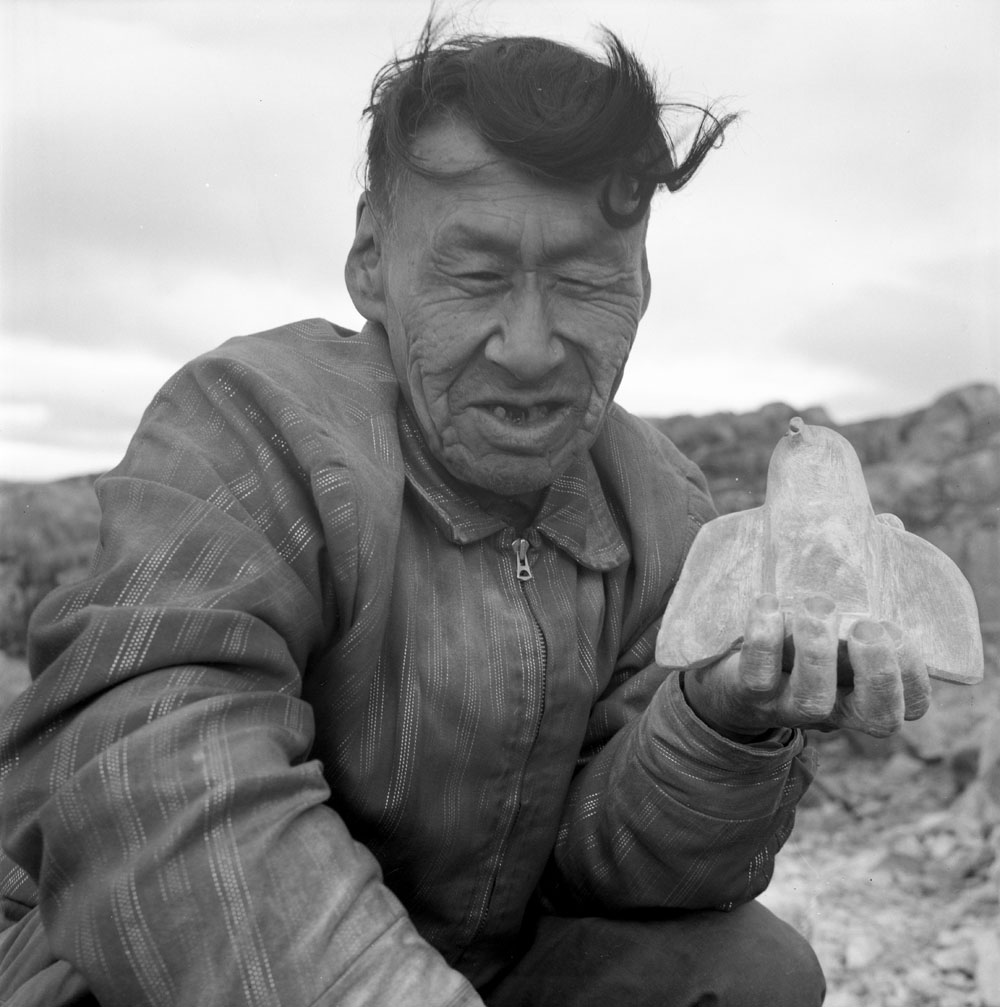
About
Head of Bear

Head of Bear
Tudlik moved to the Kinngait (Cape Dorset) area in the early 1950s, and shortly after began a prolific art career. His style of minimal detail and smooth surfaces greatly influenced his son, Latcholassie Akesuk, who also became a prolific carver. Polar bears were a common theme for Tudlik, as were owls. His sculpture from the 1950s is recognizable for its composition that often reflected the shape of a block of stone.






